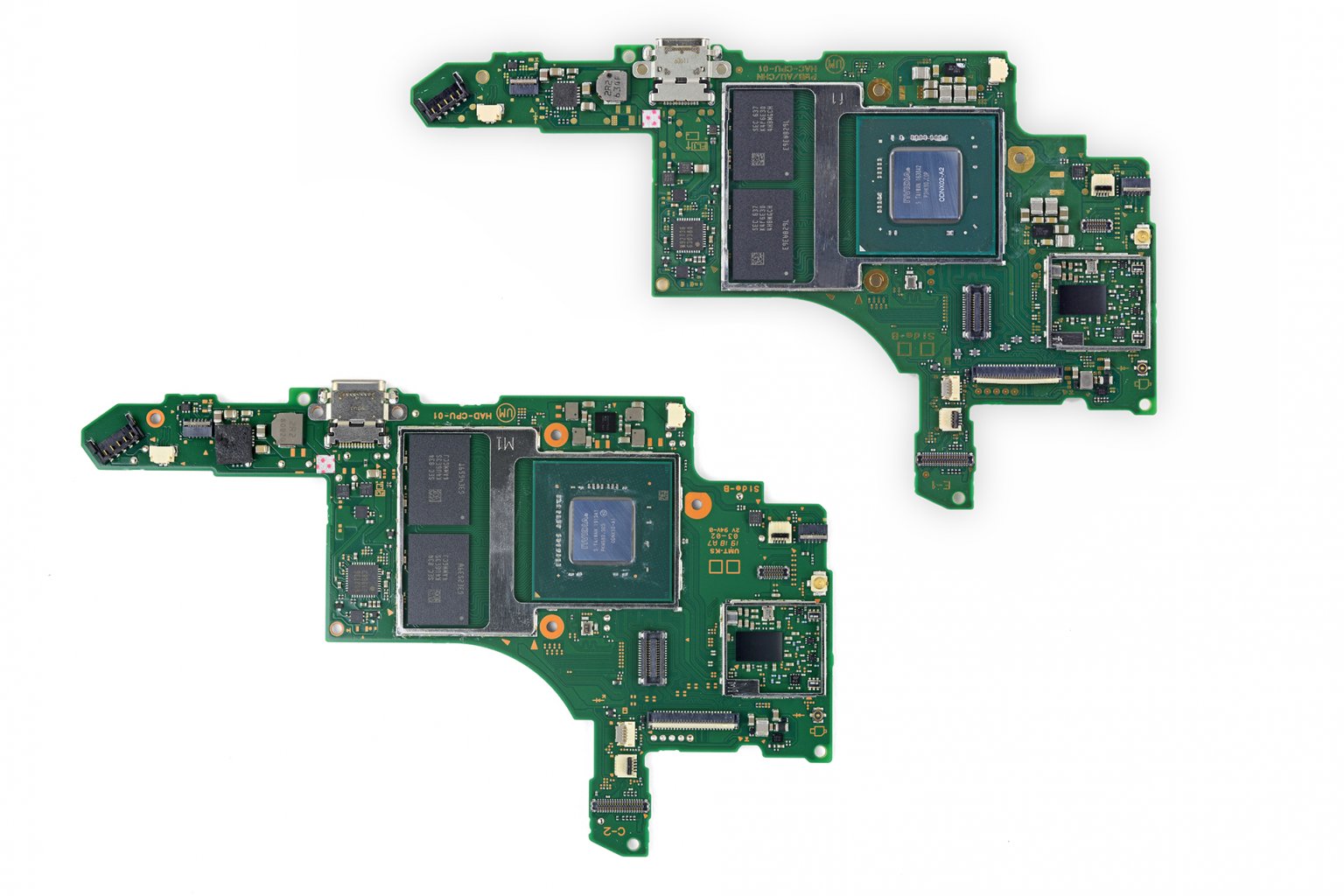As we wait for the Switch Lite’s September 20th launch, Nintendo quietly refreshed its existing Switch gaming console, sneaking in better battery life. How did they accomplish that, you ask? We can take a pretty good guess, but we had to see for ourselves.
Before we look inside, some advice if you’re looking to buy a new Switch and want to make sure you get this updated model: The easiest method is looking at the new packaging—Nintendo updated the box with an all-red background and no hands in sight.

Second, you can take a peek at the serial number on the box, which should start with XKW. Hopefully that’s enough for you to go by without opening up the box, but the last identifier is the model number printed on the back of the Switch console itself. The new model number is HAC-001(-01), while the older model number excludes the (-01).

Now that you know which Switch is which (ha!), what’s so different about them on the inside? Not much. If you’re curious what changes were made to increase the battery life range from 2.5-6.5 hours to 4.5-9 hours, it’s not a bigger battery—in fact, it’s the same battery as the older model.
The difference is a new CPU and updated memory chips, which offer increased efficiency resulting in significantly better battery life. The updated CPU is still an Nvidia Tegra X1-based system-on-chip—we’re pretty sure this is a Nintendo riff on the T210B01 Tegra X1 chip that is also rumored to appear in the new Shield TV and possibly the Switch Lite. If this is true, we’re looking at a smaller 16 nm chip, which would account for a good chunk of the efficiency improvements over the old 20 nm chip. The updated LPDDR4X memory chips are also more energy-efficient than the LPDDR4 chips from the 2017 model.

Everything else inside this revision is almost exactly the same as the original Switch, from the Bluetooth and WiFi chips to the unfortunately-soldered-on USB-C port. This includes the Joy-Cons, which are suffering from drifting issues that Nintendo still needs to officially address (although they seem to be quietly offering free replacements). So overall, better battery life is the name of the game, and if you’ve been in the market for a Switch, now is the time to jump in (unless you’re pining for the Switch Lite, in which case you’ll need to wait until next month.)







8 Comments
Can you just replace the mother board from the old model to the new model?
abc7126 - Reply
This is a really good question. The photo comparing to two versions shows little visual difference, so I wonder if there will be a market for swapping the motherboard out? (How much does a replacement motherboard cost…)
andrewglawson -
Hi.In the image of the processor board, is it possible that the description is around? To the right the previous version and to the left the new version.
Pepto - Reply
Ha, yes, you’re right. It shall be fixed!
Craig Lloyd -
Measure the die size?
Dong McGee - Reply